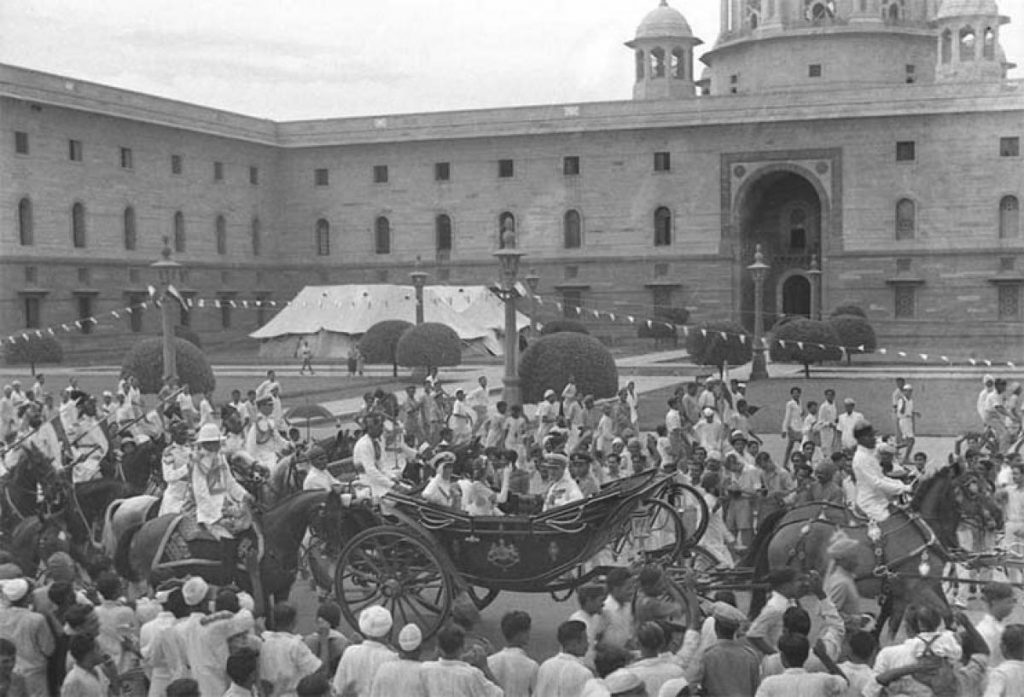After India became independent in 1947, there were many pressing and demanding problems and challenges before the Indian Government. The country though born in 1947, opted to retain its age-old legacy of trade practices and culture. The case was different in another part of India, which was born with a different name Pakistan, opted for cutting off its umbilical cord of culture and legacy, the task was simple; to write afresh on a wiped off slate. But in the case of India, the job was complex and profound; it had decided to move forward talking along with all his history and trading that was writing on a sheet full of ups and downs of Indian civilization.
1. The new country was a scissor-cut nation with truncated regions of industry and their producing areas. The cotton-growing areas feeding the textile mills of Bombay and Ahmedabad went to Pakistan, similarly, jute-growing areas in Bengal went to East Pakistan cutting off the supplies to Jute mills near Calcutta. The Tea growing states became far away due to traversing of land routes to circumvent the boundaries of East Pakistan. These all were left with a wrecked transport and communication system.
2. Apart from the above-mentioned economic injury, the whole mass was left bleeding from the body as well as soul; millions came to India after losing their age-old homes and business. The religious mistrust and divide were complete after the birth of Pakistan on ‘two-nation theory.’
3. On the world political map, there were equally strong and opposite polarization of political and economical blocks of socialism under USSR and capitalism under the USA was complete and ever existent.
Under the given critical situation, it was indeed a job of not less than a saint to script the constitution for the existence and blueprints for the development of the new India.
It is a matter of great pride and satisfaction that India is having so far the best of all constitutions. It was possible only because of the great wisdom, sincerity, and honesty with which the experts contributed to the foundation of the world’s largest democracy.
It has borrowed all the brightest section from American and French constitution on civil liberties and rights, and have taken the ruling model of UK, where the prime minister is the executive head working under the constitutional head ‘‘The Queen’’. India had no place for the monarch, so she had a President ‘’RASHTRAPATI’’, the human form of our Government, high above the political contests and a dignified place to co-ordinate between all the three pillars of our sovereignty, the judiciary, the legislature and the executive bureaucracy. Indian constitution came into effect on 26th January 1951, i.e. after 40 months of gaining independence.
The next item high on the agenda was to write the blueprint for economic development. It was also a very difficult task considering the parallel existence of two economies having their merits and demerits. The Government of India was having a vast priority after independence. We had a golden legacy on one hand and a very stark reality of malnutrition and miseries on the other hand. The global scenario of America was sponsoring capitalism and USSR Communism. We were in a fix. We went for the Mixed Economy. The leaders, who were in the seat of the government, had their finger on the pulse of masses, which was deprived of any fruits of industrialization, whose agriculture was grossly neglected.
Moreover, the Government had a fragile infrastructure, which was leftover almost in ruin after the partition. The Government took five more years for devising a model of a mixed economy, having a blend of social as well as capital economy.
The Government took the responsibility of looking after infrastructure and core industry and left others areas to be free for the capital economy. The government announced its policies in 1956; the vehicle of economic growth was the Five – Year Plans with an annual fiscal budget.
Mr. Nehru soon introduced Public Sector Undertaking Banking in the core areas and allowed the private Sector also to perform and also supported subsidies for rural development. He also started a 5-year plan to give planned economic growth.
The Indian Business community had demonstrated their whole-hearted support to the Government of Independent India, by contributing with their full might in the task of nation-building. The prominent business houses of Birla, Tata, Sriram (DCM), Modi, Dalmia, Bajaj, Kirloskar, Goenka (DUNCAN), Sundaram (TVS) and many more; all of them started building up industrial estates like Renukut, Jamshedpur, Modi Nagar, Dalmia Nagar, Bajaj Nagar and many other throughout the country.
The Business community was greatly charged with patriotism and nationalistic fever.
The Government also took its task seriously and sincerely by launching the setting up of infrastructure, by building up Bhakra and Damodar Valley power projects, Bhilai, Rourkela and Durgapur steel plants.
Prime Minister Nehru had termed the new coming up Industrial structures as the temples of modern India. He was very honest and truthful in his vision of building up new India having strong business strength, and promotion of building up industry and trade was the need of the hour.
Similarly, we had many other visionaries like justice MC Chagla, Sarvashri Jai Prakash Narain, Ram Manohar Lohia, and C Subramanian, who had contributed to the building up of an Indian class of economy with all their originality, honesty and purity of thoughts and wisdom. Shri C Subramanian was another honest and living embodiment of true Indian culture.



